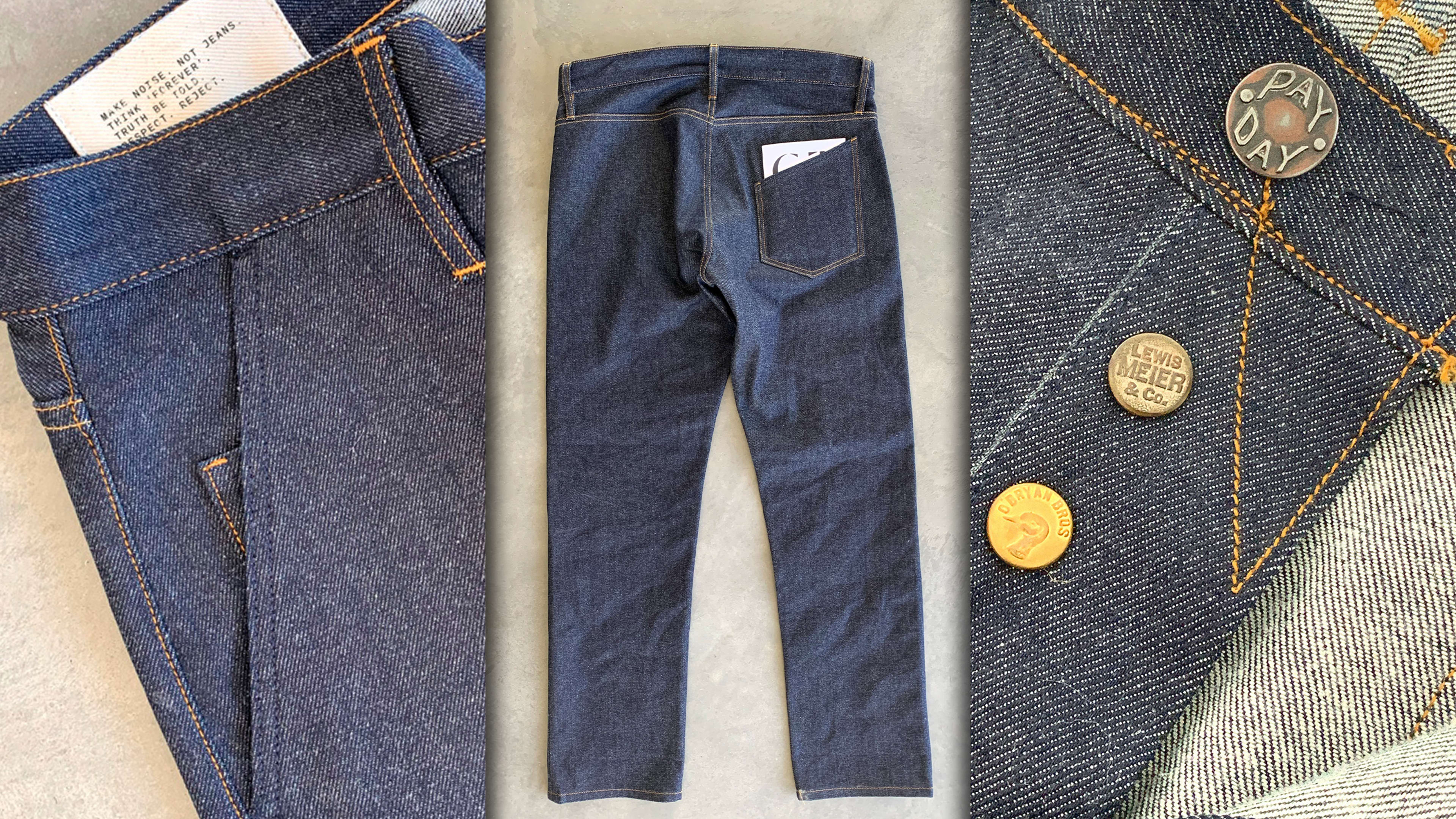It’s a completely impractical way to make a pair of jeans. But that’s what makes MTTR—a new British brand founded by denim industry pro Bob Shankly, featuring designs by Mohsin Sajid, who Shankly dubs “the Jony Ive of denim”—so refreshing.
To wit, here are their plans, which would cause the C-suites of any major clothing company to recoil in horror:
—MTTR’s jeans are limited to 500 pairs per year—the number the brand needs to keep the lights on, and nothing more.
—There are no plans for growth.
—When you order a pair, you’ll have to click through a “Think before you purchase” button with a built-in delay to prevent impulse buys.
—MTTR pockets 20% of the 170 pound ($215-plus) jeans, which goes toward running the company. The rest is the cost of making the jeans.
—They aspire to be the second-most responsible denim company on the planet. As Shankly puts it, “the most responsible is the pair of jeans that you don’t buy.”
All of this might seem like an idealist’s fantasy (admirable, albeit ill fated) were it not for the people involved, like passionate denim industry pro Shankly, who previously worked for the cult-favorite Welsh brand Hiut before launching MTTR.

“The question I’d always ask myself is, ‘Does the world need more jeans?’ And of course, the answer is no,” Shankly says. “But then I probably started to ask myself the wrong question, which was, ‘If you were going to make something the world doesn’t need, how would you make a difference?’”
For Shankly, it meant completely reimagining the way modern denim is made. Shankly and Sajid began by reversing the design process: If the ultimate goal was to create a pair of recyclable and repairable jeans, how would they get there? Material, of course, was critical. After working with a well-established denim maker on a fabric created from wood pulp and recycled cotton—with no pesticide use, no water, no wasted energy and chemicals—they thought they had found their match. But then at the eleventh hour the company added in a bit of virgin cotton. And MTTR completely pulled out, effectively returning to square one.

“The single-mindedness of Bob’s thinking in the whole project is really key,” says MTTR founding partner Jim Sutherland (the designer responsible for the excellent no-waste minimalist design of MTTR’s website). “For me, that was just a really seminal moment.”
As luck would have it, Sajid had been talking to Cone Denim about a new product the company was launching, dubbed Bonzai—a 100% completely recycled cotton. Almost 24 hours after losing their fabric, they had a new one, which MTTR would be the first to use.

Still, the quest for recyclable jeans goes far beyond fabric. Shankly says that when jeans hit a recycling facility, only the front and back of the leg area are cut away and recycled; the other 40% winds up in a landfill or incinerator due to the rivets, leather brand patches, and labels that are not recyclable. Seams with thread also often don’t make the cut because workers have no way of knowing what they’re made from. Thus MTTR’s jeans have no leather patch, but feature a clearly labeled pocket bag listing the composition of their materials, which are all recyclable (and which MTTR will recycle for customers; all they have to do is send the jeans back at the end of their life cycle).

Another massive challenge: the button on the jeans’ waistband. After struggling to find a partner that could provide a detachable button (“that’s really why the jean hasn’t changed in 150 years—because it’s such an established process,” Shankly says), the team found one 150 years in the past. “Bachelor buttons” were originally created for solo men to make DIY fixes to their clothes in the 19th century, and MTTR is resurrecting “Pilcher’s Automatic Bachelor Button,” which can easily be removed and reused or recycled.

In the end, MTTR emerged with the M1, named for Mohsin Sajid. And the final product was checked against Dieter Rams’s 10 principles of good design—which is perhaps apt, as documentarian Gary Hustwit (director of Rams and Helvetica) once noted, “If Dieter Rams started a denim brand, it’d probably be something like MTTR.”
After extensive fit-testing and fine-tuning, the first 100 pairs of the M1 have now gone into production at Blackhorse Lane Ateliers in London, and Shankly expects to release a public wave around May.
Beyond jeans, though, he says what he is really selling is an idea. You may see madness in his plan—but he sees the future of denim. “It’s values,” he says. “You’re able to wear your values. And at the very basic level, that’s what fashion is about, isn’t it?”
Recognize your brand’s excellence by applying to this year’s Brands That Matter Awards before the final deadline, June 7.
Sign up for Brands That Matter notifications here.
